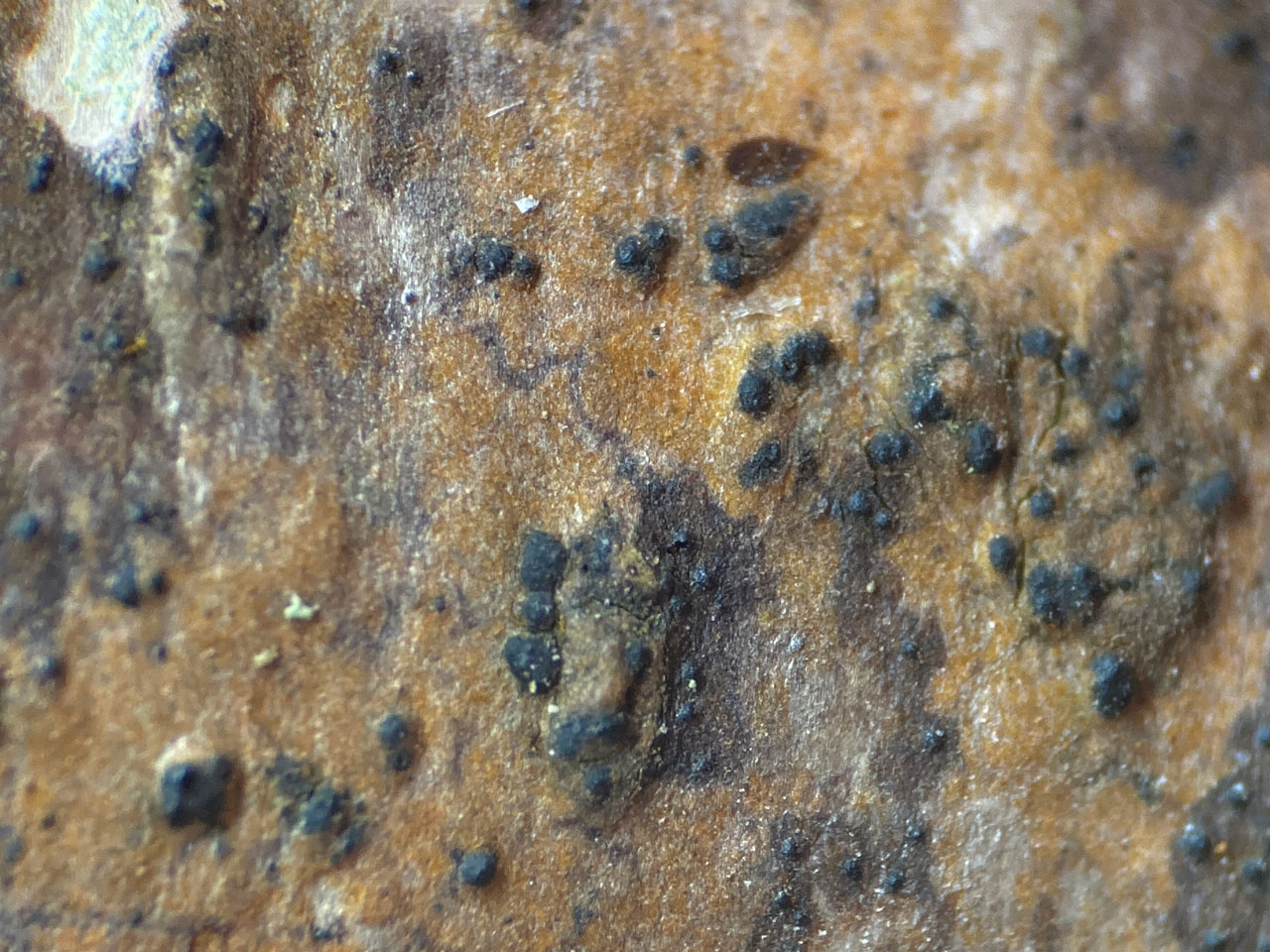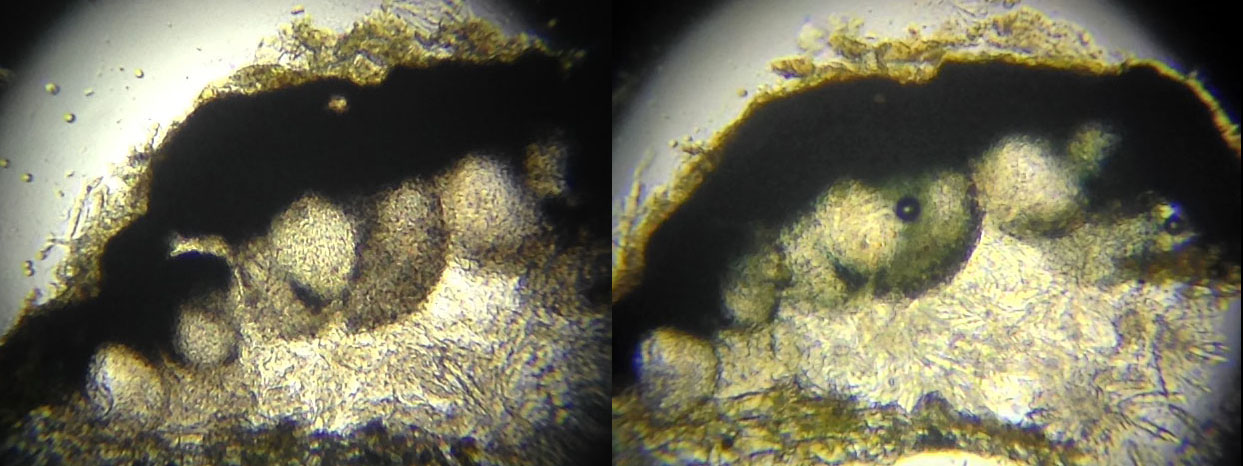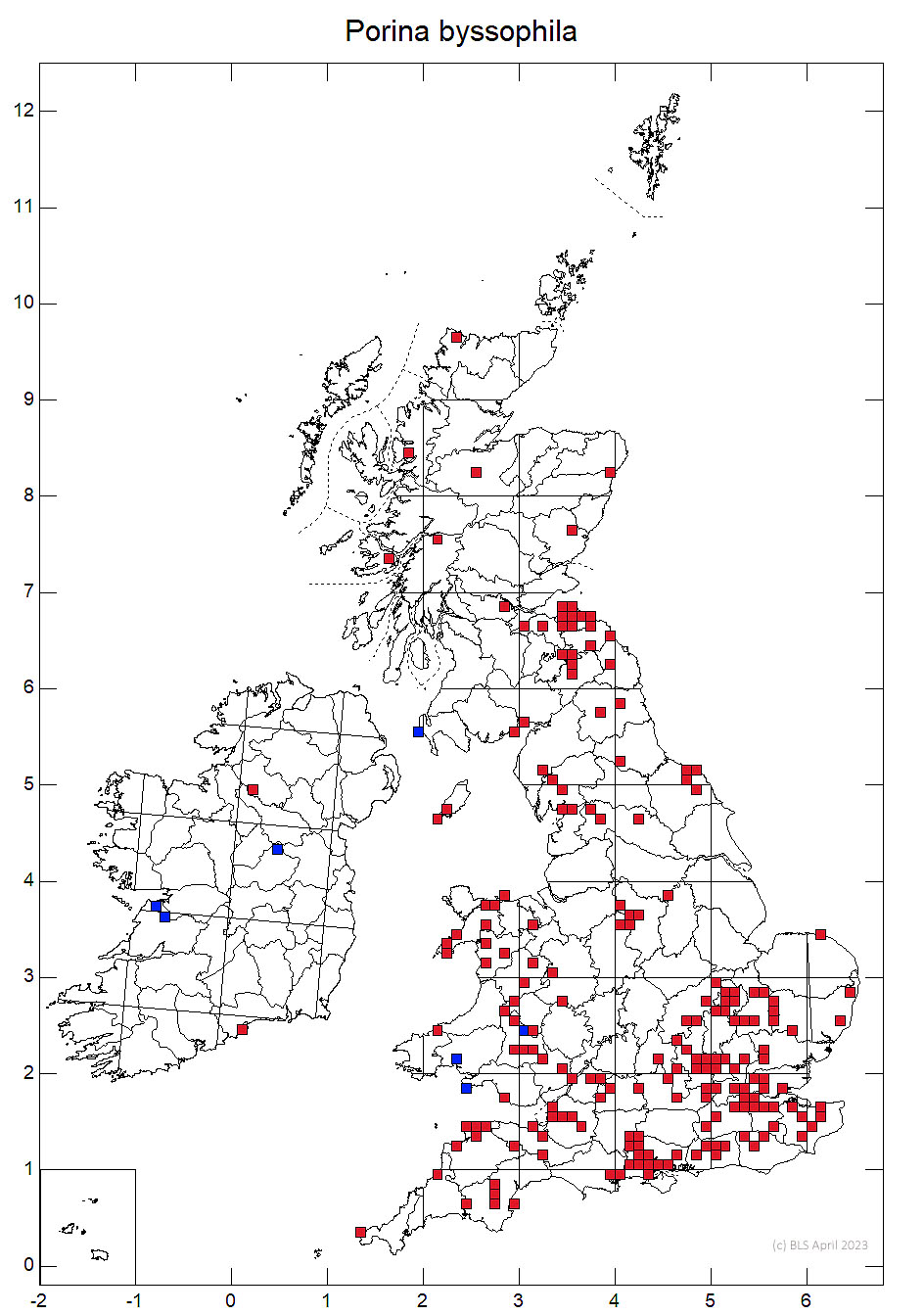Porina byssophila
A small Porina, which was, until recently thought to be a rare species of shaded limestone. That was until Mark Powell noticed that much of what was being called Porina aenea on the trunks of trees had the wrong involucrellum K+ reactions. Alan Orange then confirmed that this taxa was actually Porina byssophila and it has proved to be much more frequent as an epiphyte than it is on limestone. On bark, the often grouped perithecia are a good indication of potential candidates to be P. byssophila. Porina aenea is more of a twig species, with P. byssophila predominant on trunks as an epiphyte.
Thallus superficial, well-developed, dull grey-green to green-brown or grey-brown, smooth to uneven, continuous to cracked. Perithecia one tenth to half-immersed, 0.13–0.3 mm diam., often grouped and partly merged; involucrellum purple-violet to purple-brown, K+ blue-grey to dark grey-brown; exciple dark. Ascus with a ring-structure. Ascospores 3 (-7)-septate, (17–) 18.5–24 (–29) × (3.5–) 4–5.5 (–6) µm, (3.5–) 4–5 (6.5) times as long as wide. Conidia cylindrical, 2.9–3.3 × ca 1.2 µm.
Most collections have only 3-septate ascospores. Close to Porina linearis, which differs in the endolithic thallus. P. aenea and P. chlorotica differ in the usually browner and thinner thallus and the different pigment in the involucrellum. On bark, the often grouped perithecia are a good indication of potential candidates. In the past epiphytic occurrences of this taxa were recorded as Porina aenea, but the latter is mainly a twig species, with P. byssophila the predominant species on trunks.
Originally known from limestone and on slightly basic siliceous rocks, on shaded rocks and stones, usually on surfaces sheltered from rain. Recently found also to be widespread on trunks of trees, on both older trees and damaged younger trees and shrubs where it is found on base-rich bark, typically as a pioneer in wound tracks.

Throughout England, Wales, S.W. Scotland, W. Ireland, very localised on rock but widespread as an epiphyte.
The 2012 assessment of Data Deficient was made when this species was thought to be confined to limestone outcrops. As it is now known to be a widespread and locally frequent epiphyte as well, the previous assessments need reviewing. The lichen, as now known, would clearly not qualify for any Red List status.
Britain: Data Deficient (no longer a valid assessment), Notable (status requires review)
Scotland: Priority Taxon for Biodiversity in Scotland (status requires review)
Wales: Vulnerable (no longer a valid assessment)
Orange, A., Cannon, P., Malíček, J., Sanderson, N., Coppins, B. & Simkin, J. (2021). Ostropales: Porinaceae, including the genus Porina. Revisions of British and Irish Lichens 4: 1-12.
Text by N A Sanderson, based Orange et al (2021)


